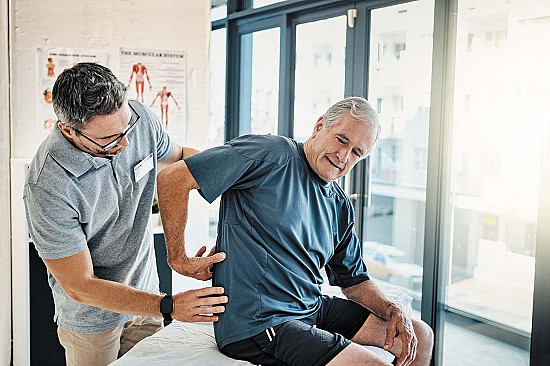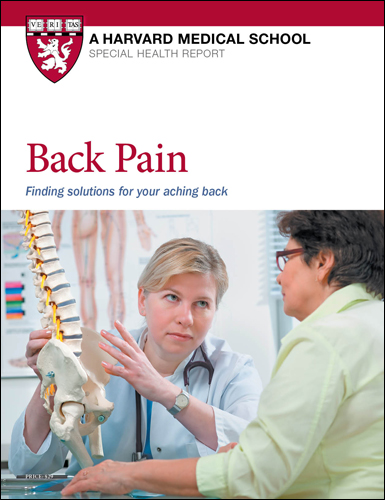"Pandemic posture" hurting your back? You can fix it!
Here's what to do if you've developed back pain from poor posture habits picked up in the last year.

Move over, "Quarantine 15." That term, coined for pandemic-era weight gain, isn't the only catchy phrase from this challenging time. Now there's "pandemic posture," referring to poor posture from slouching at a desk or on a couch during time at home — and it brings lots of back pain complaints with it.
We asked Dr. David Binder, a physiatrist and director of innovation at Harvard-affiliated Spaulding Rehabilitation Hospital, about this phenomenon and what to do if you're experiencing it.
Q. Is "pandemic posture" real?
Dr. Binder: Yes, we have seen increased complaints of neck and lower back pain in the last year, often in the context of sitting for extended periods of time with increased work at home.
Many people don't have the same facilities or workstations that they have in an office setting, which has created poor posture.
Or maybe they're spending too much time in a comfortable chair or on the couch.
Q. Why does poor posture cause back pain?
Dr. Binder: Holding any posture for a long period of time, whether it's standing or sitting, sometimes increases discomfort because of muscle spasms or muscle fatigue.
Having poor posture may also put increased pressure on certain joints or produce an imbalance on one side of your body that bears an increased load compared with the opposite side.
Additionally, poor posture can result in nerve irritation at pressure points such as the buttocks or tailbone, which can be painful.
Q. What do you recommend for people who want to reduce back pain from poor posture?
Dr. Binder: It's helpful to exercise every day with a well-rounded routine that includes a warm-up, aerobic exercise, a cool-down, and general muscle stretching. This will keep your muscles strong and flexible.
Sometimes working with a physical therapist is useful as well. A therapist can help you understand the mechanics of how to sit up straight, with your back arched and your shoulders back and down. The therapist can also train you to strengthen and stretch the muscles that help you sit up straight. Those include your abdominal, back, shoulder, neck, and chest muscles.
(Note: If you have medical conditions, check with your doctor before starting a physical exercise program.)
Move of the month: child's pose
Get on your hands and knees. Keep your hands flat on the floor in front of you, exhale, then lower your buttocks backward until they rest on your heels and feet. Lower your forehead to the floor and extend your arms in front of you, hands still flat on the floor. Hold, then inhale as you come back up. Exercise photo by Thomas McDonald |
Q. Would improving a home workstation also help?
Dr. Binder: Absolutely. Use a chair with lots of cushioning for the buttocks and support for your lower back. Sometimes using a footrest helps you feel more comfortable and takes a little load off your back. A footrest is especially helpful for people who are a bit shorter, so they can keep their knees at an optimal angle — approximately 90°.
Other workstation tips would be raising your computer monitor to eye level, so you won't have to look down all the time and put pressure on your neck, and using an ergonomic mouse and wrist pad to cut down on wrist, arm, and shoulder discomfort — which can lead to pain in the shoulder, shoulder blade, or neck. But watch out if you use a standing desk, which allows you to stand while working. Standing for long periods can worsen back pain.
Q. What else helps?
Dr. Binder: Set a timer to get up from your desk — or couch or chair — and move around every 20 minutes. This will keep you from being in one position for extended periods of time. Getting up will also give your spine a break from the pressure of sitting and keep your muscles from getting too tight. And of course, staying active throughout the day is also important for many other aspects of health; sitting too much is associated with chronic disease and even premature death.
Image: © Charday Penn/Getty Images
About the Author

Heidi Godman, Executive Editor, Harvard Health Letter
Disclaimer:
As a service to our readers, Harvard Health Publishing provides access to our library of archived content. Please note the date of last review or update on all articles.
No content on this site, regardless of date, should ever be used as a substitute for direct medical advice from your doctor or other qualified clinician.

















